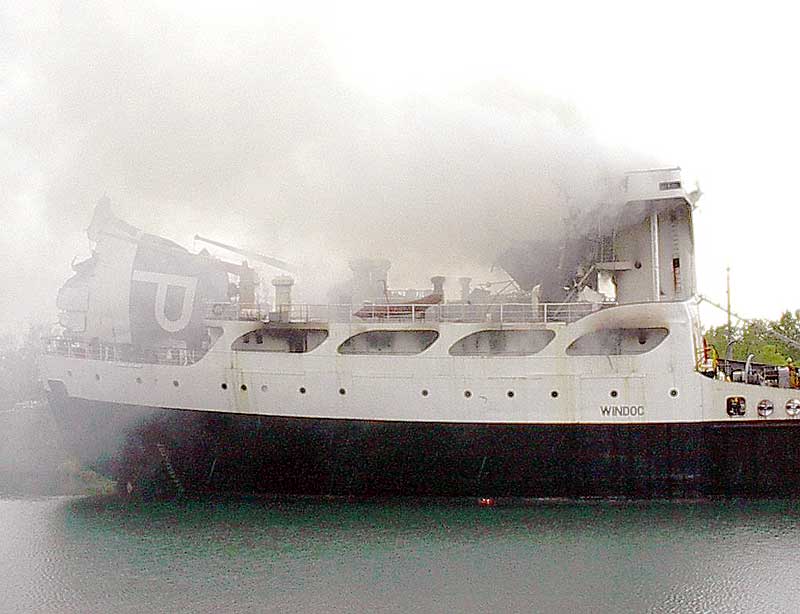Fire-Damaged Car Carrier Morning Midas Shows No Signs of Active Fire
The car carrier Morning Midas, which experienced a fire in its electric vehicle cargo deck on June 3, shows no signs of active fire according to salvage teams that recently...


In August 2001 the Bulk Carrier Windoc was lined up on the Welland Canal’s Bridge 11 in Ontario Canada. After receiving the flashing amber approach light indicating that the bridge operator was aware of the vessel, the captain lined up on the centerline and maintained a speed of 5 knots. Minutes later while the vessel was half way through the bridge started descending.
When the vessel was approximately halfway under the bridge, the third officer observed that the bridge signal lights were solid red and the lift span was descending. At 2053, the master sounded a few blasts on the ship’s whistle. The master, without identifying himself or the bridge in question, called the TCC on VHF channel 14 about the lowering of the bridge. The master quickly stopped the engines and ordered an evacuation of the wheelhouse. The master and third officer left the wheelhouse by the starboard navigation bridge wing. As they proceeded down the external bridge access ladder, the span of the bridge struck the vessel in way of the wheelhouse front windows, subsequently destroying the vessel’s wheelhouse and funnel. The helmsman remained at his station in the wheelhouse and lay down on the deck as the bridge span passed overhead. He freed himself from the debris and descended by the deckhouse stairwell alive.
Miraculously no one was killed in the event.
MS Windoc was a Lake freighter or laker, initially constructed as a bulk carrier in West Germany in 1959. Entering service that year as Rhine Ore, the ship was renamed Steelcliffe Hall in 1977 and reconstructed as a laker. In 1988 the laker was renamed Windoc.
As a bulk carrier the ship had a gross register tonnage of 8,202 tons and a deadweight tonnage of 19,918 tons. The ship measured 166.4 metres (545 ft 11 in) overall and 157.5 metres (516 ft 9 in) between perpendiculars with a beam of 22.6 metres (74 ft 2 in). The ship was powered by one diesel engine and had a maximum speed of 14.5 knots (26.9 km/h; 16.7 mph).[1]
After the vessel’s conversion to a laker, the gross register tonnage increased to 18,531 tons and the deadweight tonnage to 29,050 tons. The length overall of the ship was increased to 222.5 metres (730 ft 0 in) and between perpendiculars to 218 metres (715 ft 3 in). The beam was also increased to 23.1 metres (75 ft 9 in).[1]
For detailed information on the incident visit:




Sign up for gCaptain’s newsletter and never miss an update

Subscribe to gCaptain Daily and stay informed with the latest global maritime and offshore news


Stay informed with the latest maritime and offshore news, delivered daily straight to your inbox
Essential news coupled with the finest maritime content sourced from across the globe.
Sign Up